Project News
2009-04-06
Small Animal Husbandry
Domestic animals are grouped by size; the cow, buffalo and horse are large animals, the pig and goat are medium animals, and chicken, ducks and rabbits are small animals. Many inhabitants in the Project area raise small animals, such as chickens, because they do not require a special area and are easy to manage. However, it is difficult to develop a market and most of the production is destined for home consumption. We thought that small animal husbandry could become an activity for creating income for the groups, so together with the counterparts we visited a small animal farmer in the area to gather information.
Photos 1 and 2 show a rabbit farm. In one corner of a large farm (located 20-30 minutes by car from the Project office) is the rabbit shed where hundreds of rabbits are bred. The rabbits are kept in square cages, made of wire, measuring 70cm (about 30 inches) on each side. The parent rabbits and young are kept in the same cage; the date of birth and other information is carefully recorded on the cages.
We were told that the main objective of raising these rabbits is for their fur – used in making clothes and handbags.
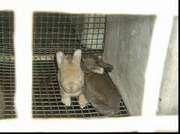
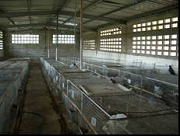
(Photos 1 & 2) View of the rabbit cages. (April 15, 2008)
Photos 3 and 4 are from a quail farm in Chitre, Herrera Province. We visited it on June 10 and 11, 2008. The advantages of raising quail are that they grow faster than chicken, their egg-laying interval is shorter so if all goes well they can lay two eggs a day, several quail can be raised in the same space as one chicken, they are easy to manage and quail eggs can be processed to create value-added products
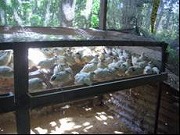
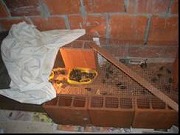
(Photo 3: left) Quail chicks
(Photo 4: right) Quails have brown plumage, but some had white plumage, which is uncommon.
After studying all the advantages, the Project decided to introduce quail raising activities to the groups. The method used by the quail farm we visited was used as a guide and the Salamanquita group, whose members are mostly women, began raising quail as a test case. (See photos 5 & 6)
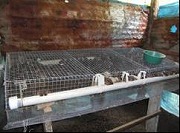
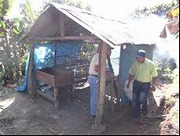
(Photo 5, left) The quail shed is being constructed; it will protect the quail from the sun and rain. On the left is the extension worker Mr. Jose Carrion, and on the right is the Project's boat operator, Mr. Luis Hernandez.
(Photo 6: right) A view of the handmade quail coop and the water trough made by cutting a PVC tub in half. Mr. Luis Hernandez made the coop himself sacrificing time from his vacation. (December 5, 2008)
(Ms. Yuka Saito, Coordinator)
